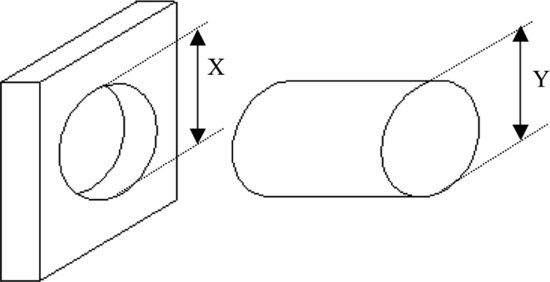7.4 Example: Solving a Problem Using Random Numbers
A common operation in the assembling process of a certain mechanism consists of introducing the ending part of a shaft into a given hole; the end shaft must stay inside the hole. If the hole diameter X is distributed according to a normal N(3,00; 0,03) and the shaft diameter Y according to a N(2,98; 0,04), what percentage of these operations will not be carried out because the shaft is thicker than the hole?

Generate 10000 axis-values from a normal N (3.00; 0.03) and place them in column C1. Likewise, generate 10000 hole-values from a normal N (2.98, 0.04) and store them in C2, so that we end with 10000 couples of axis-hole. Those couples in which C1 values are less than their respective C2 values cannot be mounted.
To find out in how many cases the values of C1 are less than their respective row values in C2, use the calculator logical functions: Calc > Calculator

Then, just add the values in C3 (Calc > Column Statistics) and divide by 10000. The result, computed analytically, is 34.46%.
Get Industrial Statistics with Minitab now with the O’Reilly learning platform.
O’Reilly members experience books, live events, courses curated by job role, and more from O’Reilly and nearly 200 top publishers.

